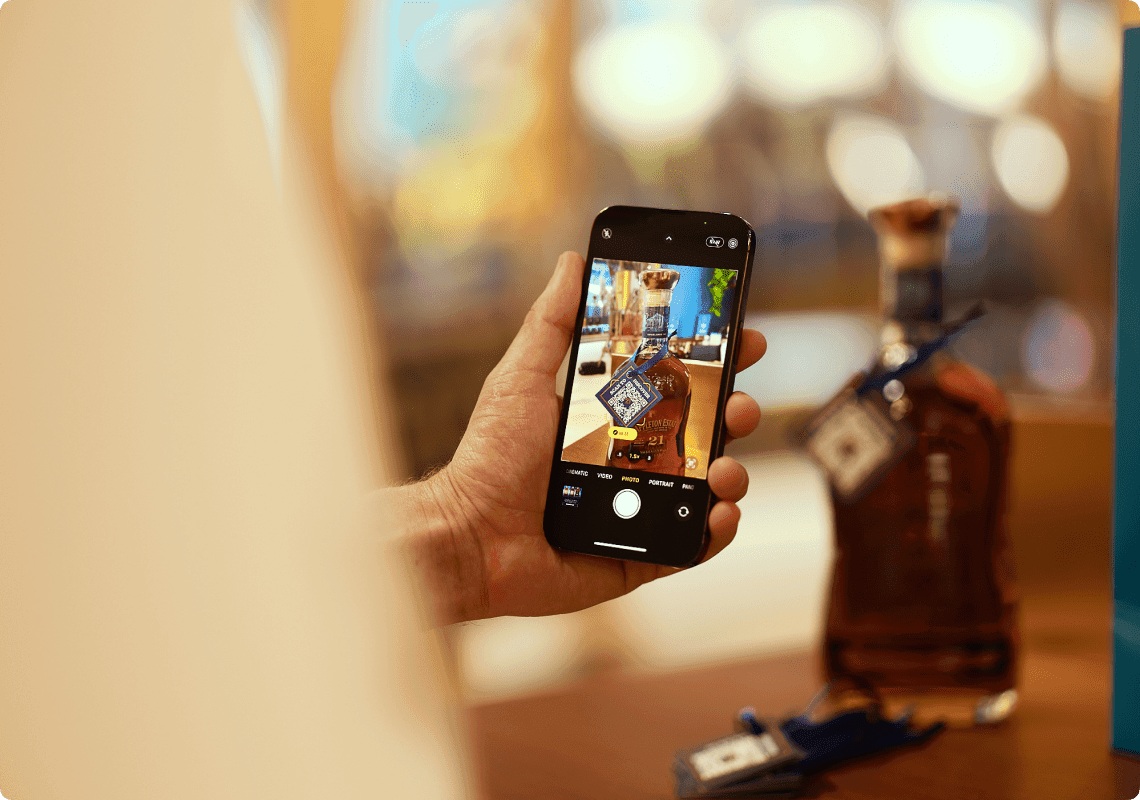




Dynamic vs Static QR Codes
What’s the difference?
Fixed (or simple) QR codes are hardcoded and link to a single URL that cannot be changed. Dynamic QR codes can link to any URL and do so via an ID management platform that allows a user to constantly change the destination that a QR code will deliver a user to, even if the physical QR code itself does not change.
Flexibility & adaptability
Imagine you are a massive toy company, say Mattel, that has just created and distributed a child’s toy to tie in with a new movie release, say Wicked. Now imagine the horror you experience when you realise that nobody checked the eponymous URL that was put on the back of the toy box and that it doesn’t go to the film’s new website, but instead an adult website.
This encapsulates why using dynamic QR codes over static QR codes or URLs is a far superior option to product owners. Using a dynamic code allows you to be in constant control of where you are directing your consumers, ensuring they are always being given the best experience and most importantly in this case, ensuring they are being sent to the right place!
This flexibility and adaptability is perfect not only for emergency situations such as this, but also more broadly to use with fast moving marketing campaigns, promotions, or any context where content needs to stay current – from product info to regulatory compliance.
Enhanced consumer experience and engagement
The beauty of using dynamic QR codes, which you won’t find from most basic QR code generators and why you shouldn’t use those for your business, is that you can give your consumers tailored experiences.
By using QR codes that work through an ID management platform, you can give your consumers a more personalised experience delivered by user segment, location, time of day, sequence of scans (1st, 2nd or 3rd time scans all be different) or by pretty much any other contextual rule you can think of.
And these different sets of content and experiences can be delivered to meet a huge range of needs, from updating product information to giving region or time specific offers – such as incentives to purchase based on weather data for example.
Real-time tracking and analytics
By making your codes dynamic you are also going to be able to garner better data from each scan and interaction. You are teaching your consumer that each time they scan they are going to get a different kind of experience and a different type of value, so naturally, they will scan more often, which means richer data. This data can then be applied in numerous ways across your business, either to optimise specific campaigns that are in flight or to be matched with other data you hold on your consumers to make your overall investment in data work harder.
Cost efficiency, sustainability, security and control
In practical terms, the initial investment you make in creating dynamic codes instead of static codes or URLs pays off tenfold. Not just because in cases like the Mattel one you can remedy the problem before it even becomes a problem – avoiding all that nasty negative news coverage – but also because you avoid having to pay the physical costs of recalling the product. One update of your dynamic code and all product problems are solved in one fell swoop.
If you apply the same principle of recycling to your deployment of QR codes, then you are effectively recycling the physical code and putting it to work for multiple different uses. This approach not only is more sustainable in terms of your packaging costs, but it also becomes much more than a redirect, instead it becomes a gateway to whatever you want it to be, but one that you control and is secure.
Use cases for dynamic QR codes
QR codes, even dynamic ones, are merely the gateway to the business solution or consumer experience that you want them to be. Any information that must be communicated to the consumer, from vital things like allergen and ingredient information, to fun and engaging experiences can be heightened, adapted and optimised if you are using dynamic QR codes.
The most exciting element is the ability to use other contextual data to ensure that your consumer has a meaningful and relevant experience when it matters most – when your product is in their hand. Think about how you can use weather, time of day, location or previous behaviour, to create more dynamic and relevant experiences that really deliver value to your consumer.
Future-proofing engagement
As we move towards a world where regulation will demand more information is delivered to consumers – based around health concerns such as allergens; sustainability goals such as origins of ingredients; ethics of ingredients such as plastics or treatment of workers in the supply chain – you can begin to imagine how dynamic codes that can deliver consumers multiple different experiences depending on their needs and their location and their context can make a huge difference to your brand being the one they choose.
We live in a highly dynamic and adapting world, isn’t it about time that your product, packaging and media did the same? Find out how you can deliver dynamic experiences using io.tt by getting touch or starting your free trial.
